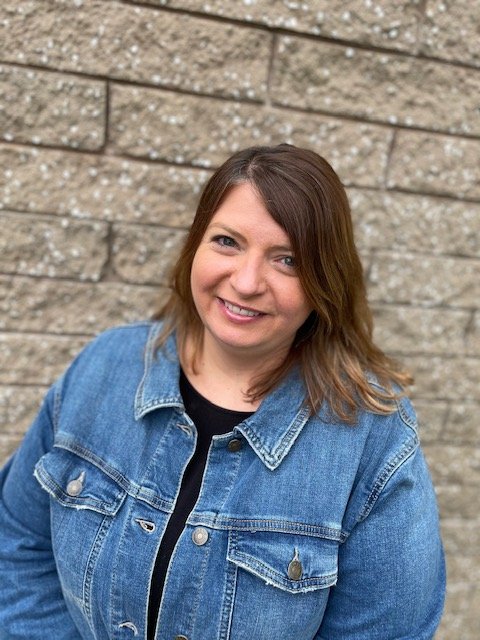
What Do Balanced Literacy and Red Meat Have in Common?
We are not wrong to emphasize the urgency of making these changes. But we are wrong when we do not acknowledge how difficult these changes are to make. Change, under any circumstance, even in the face of overwhelming evidence, is really, really, really difficult. Homeostasis rules.

Talk to Teachers: Katie Brunson
I think this shows the trust we had in Kathleen. She made it clear that we were going together, as a school, to improve reading instruction. We’re all going to give it our best shot. We’re going to implement this new curriculum with integrity. Trusting and being trusted by our principal made such a big difference.

How A $30 Book Changed the Way We Teach
PLANNING NOW: No more hunting for materials. All of the materials are right there, down to wordlists and lesson plans (a link is provided for a PDF version which makes for easy copying). Now that we have an explicit scope and sequence with scripted lesson plans, we have more time to understand the materials and make our instruction more intentional. There is no need to plan anything extra. We know the students are getting exactly what they need. Students love the predictability of each lesson and how they build on each other. The skills spiral so students are constantly practicing what they have learned.

Blending, Segmenting, and Decoding In Kindergarten
Going back to my LETRS manual, I decided to try out additive blending. In my classroom, it worked! The students who were having trouble decoding with 3 sounds, were able to decode when they blended the first 2 phonemes together and then added the 3rd sound. Here is an example of me using additive blending in my classroom. The trouble they were having was remembering the first phoneme; therefore, when it came time to blend it all together they made errors. Additive blending took that struggle right out of the equation for them.

A Conversation About Small Groups
Centers! Small Groups! Leveled Reading! Guided Reading! Foundational Skill Groups! Whatever you want to call it, we’re obsessed with differentiation! We’re told that small groups are the way for kids to get exactly what they need. But how do you pull off foundational skill groups without sacrificing time for Tier-1 instruction? And how do you make that independent time valuable for all students (i.e. NOT Chromebook or busywork time)? And should you be using small groups at all? In the following conversation, Katie Scotti and Miranda Eldridge, two Goyen Literacy Fellows, explore these questions and reflect on the differences between their schools.

Talk to Teachers: Moriah Geller
In my undergraduate program, we learned about the reading wars and the history of reading. We didn’t learn about phonics or whole language in depth - beyond what each of those meant - but we did learn about “the pendulum,” so to speak, which swung back and forth about every decade. We also learned a lot about motivation and engagement, which was valuable but not sufficient for understanding how to teach kids how to read. After graduating, I went into a master’s degree and credential program. There, too, the literacy courses were mostly focused on motivation and engagement, along with comprehension strategies, state standards, and the components of balanced literacy.

Knowledge Building is Social Emotional Learning
My students cry every year when the dog in “Love that Dog” gets hit by a car. They empathize with Brian from “Hatchet” who is dealing with the pain of his parents’ divorce while attempting to survive in the wilderness. They feel genuine sadness for Annie, a character in “Woods Runner” who loses both of her parents in the American Revolution, and they learn life lessons from Greek and Native American myths. This is social-emotional learning.

How to Tweet Productively
So what’s the lesson here? Here are three that I can think of:
It’s possible to recover from an unpleasant moment or exchange on Twitter, especially if you assume good intent and keep your commentary dispassionate.
Twitter can be a productive forum for nuanced conversation.
But we shouldn’t expect all or most conversations to end in consensus. This one certainly did not.

Using Data to Support Struggling Readers
It may only be the third full week of the school year, but targeted reading interventions are up and running. How did we get here so quickly? A Decision Tree. Data. Team Work. WIN.

Talk to Teachers: Francesca Corino
As part of our commitment to celebrating, uplifting, and highlighting teachers and their incredible work, we’re introducing a regular series called Talk to Teachers, where we interview teachers about their experience teaching reading and learning about teaching reading. This conversation is with Francesca Corino, an instructional coach or pedagogical coordinator at an international school in Brazil. Francesca learned about structured literacy while searching for alternatives to and extra supports for Units of Study. The following conversation was lightly edited for clarity and concision.

Introducing: Talk to Teachers
For the rest of the year, we will regularly share interviews with exceptional reading teachers from around the world. We want to hear directly from teachers about their experience teaching reading. We want to hear from them about their practice, about their education, about their evolution, about the questions they have for researchers, about any hang-ups they might have about “the science of reading.”

Fellowship Reflections: Talk to Teachers
But selectivity is not the goal here. We want to celebrate, uplift, and honor teachers who are doing exceptional work. We want to learn from these teachers. We want to help other teachers replicate what they’re doing. That’s the purpose of this fellowship.

Goyen Literacy Fellowship: Update 1
Ultimately, I want to select fellows that are exceptional teachers of reading, that are bringing joyful evidence-based practice into their classrooms. I want to choose fellows that will effectively capture these practices in bite-size digestible tidbits and will be exceptional models for other teachers that are trying to learn how to translate research into practice.

Announcing the Goyen Literacy Fellowship
I am thrilled to announce our newest initiative: the Goyen Literacy Fellowship!
What does this mean?
It means that we will give teachers $2000 to document excellent literacy teaching in their classrooms. If you like our SoR Classroom project and want to get paid to help us create a library of content like this, keep reading…

What does it mean to read at grade level?
And perhaps you, like me, have wondered: what do these statistics actually mean? What does it mean to be a proficient 4th or 8th or 10th grade reader? What will you struggle to understand? What can you read? What can’t you read? What do you do when you encounter a text that is beyond your grade level? What does that challenging encounter look and feel like?

What I've Learned from @SoR Classroom
More ELL content! More AAE content! There’s no doubt that reading depends on spoken language. There’s no doubt that when a child’s home language is different from General American English (GAE), then learning how to read GAE is going to be more complicated. This is true for English language learners. It’s also true for students who use African American English (AAE). We need more examples of how teachers are honoring and working with these linguistic differences. What does sound-phoneme mapping look like in a classroom of GAE speakers? How do you assess fluency? How do incorporate students’ home languages or dialects into your instructional practice?

So About That ALA Presentation: Final Lessons (Part 3)
I’ve spent the last three blog posts documenting many of my concerns with Drs. Erekson’s and Benke’s work. In the interest of time and space and attention span (yours, mine), I wasn’t even able to write about all of them. Concerns aside, though, at the end of the day, this presentation is not persuasive because it does not actually offer a positive vision of effective, inclusive, exciting, rich, and beautiful reading instruction. They don’t actually propose a comprehensive alternative. Yes, both speak favorably about balanced literacy at times, but they don’t go into what that practice entails or what it means for students in the classroom. The final lesson I hope to leave you here with is don’t just use your voice to criticize what isn’t working and complain about your school’s failure to teach reading effectively. Use your voice to describe and promote a positive, clear, engaging vision of what excellent reading instruction looks like. That is what needs to do as a movement. That is what I will try to do with my voice.

So About That ALA Presentation: Low Expectations and Learning Styles (Part 2)
No one denies that reading progress is strongly correlated with family income and wealth as well as parental education level. What jumps out to me here is that Dr. Erekson is content to blame home and social factors for low reading achievement; he has no interest in interrogating how we can improve in-school instruction to achieve better results for our most marginalized students. To quote Kareem Weaver, “the soft bigotry of low expectations sustains the belief that kids can't learn to read because of poverty and trauma.”

So About that ALA Presentation…(part 1)
If you’ve spent any time on Science of Reading Twitter or Facebook this week, you’ve probably noticed posts about the now-infamous ALA presentation on Science of Reading and libraries. I obtained the recording and slides from the presentation, and unfortunately, it is much worse than the online summary suggests. The presenters don’t just mischaracterize the science of reading as a phonics-only curriculum—the science of reading is neither a curriculum nor does it exclusively or especially focus on phonics. They also conspiratorially imply that a well-funded cadre of parents of dyslexic students, the International Dyslexia Association, Emily Hanford, the Reading League, and various SoR-related companies are pushing the science of reading for profit. Along the way, they misrepresent various reading models, suggest that dyslexia may not be real, and question why we’re changing core instruction just because of a small number of struggling readers.

What I Learned in Physical Therapy
Preparing Teaching: Teacher education should look more like Natalie’s physical therapy education. It’s that simple. That’s the insight. Teachers should receive more education about learning science, cognitive psychology, and the content of their subject area. Then, they should apply that knowledge in an apprentice setting, where they can observe an expert teacher, gradually assume more responsibility, receive frequent and immediate feedback, and debrief their work. This may happen in some teacher development programs. It doesn’t happen in many. It needs to happen in all.
